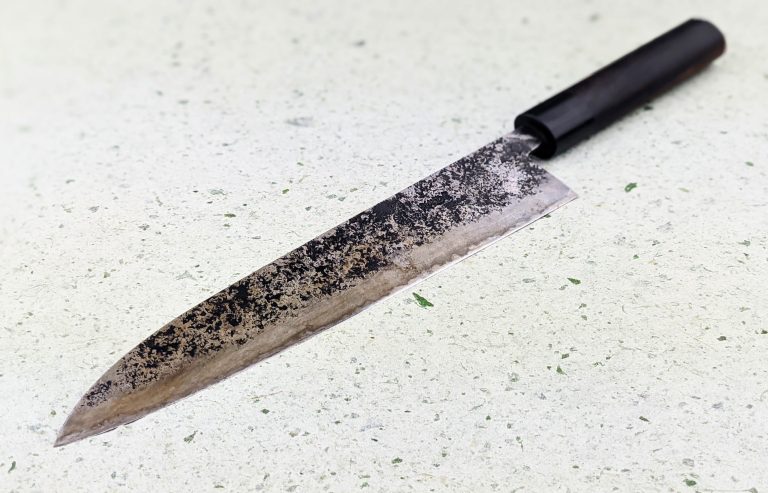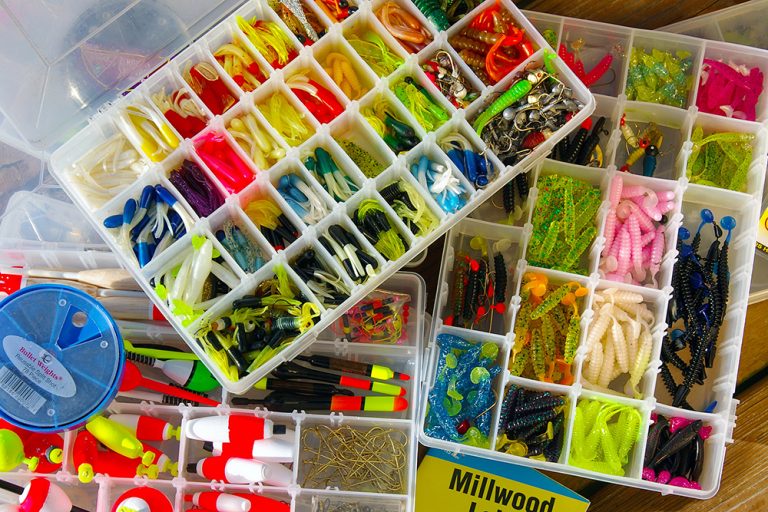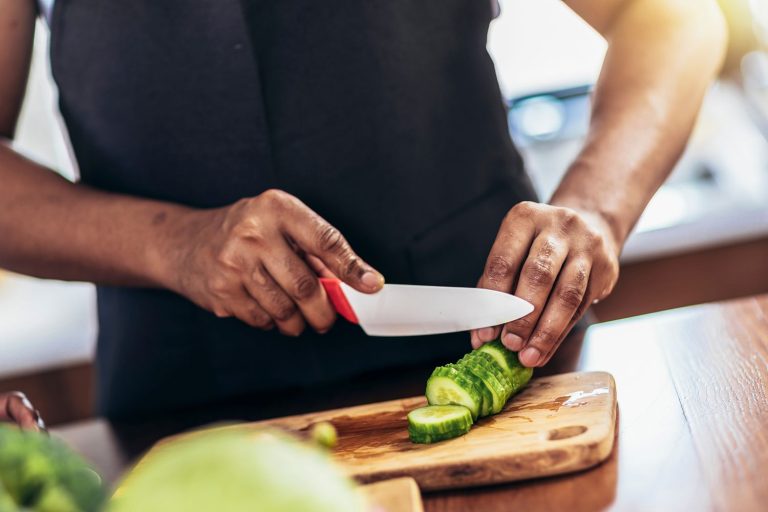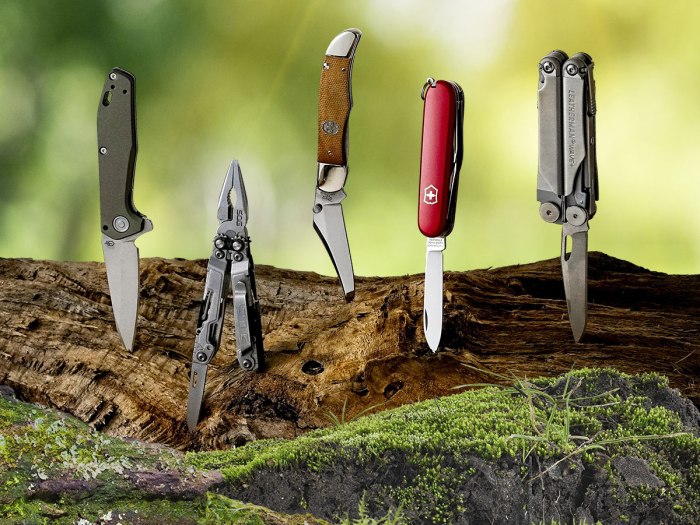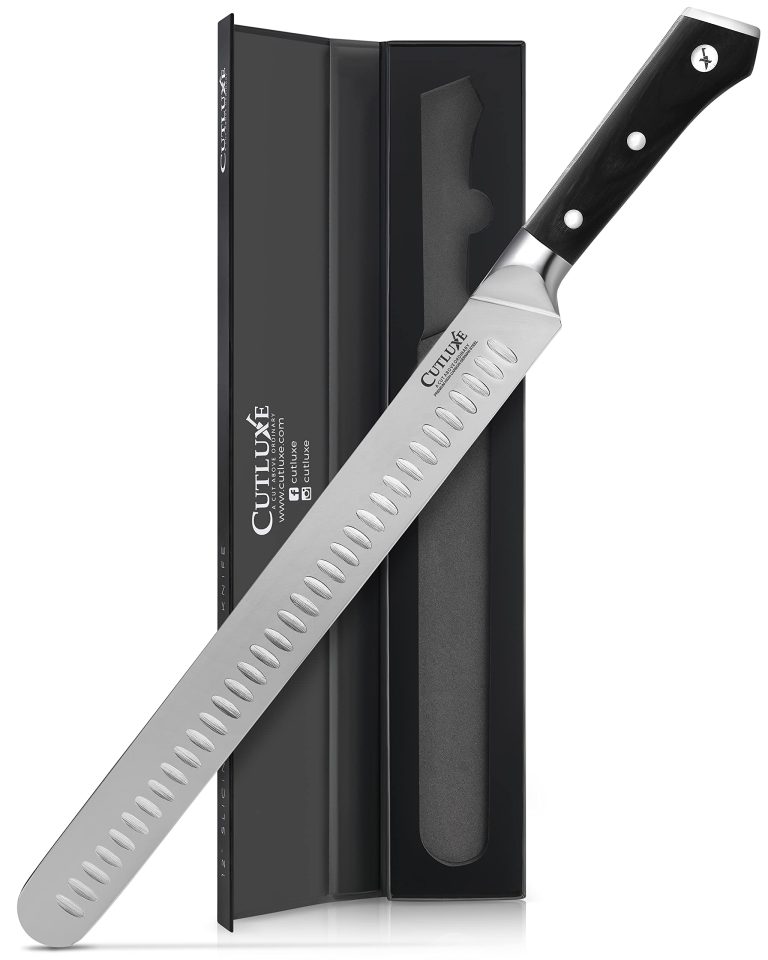Single Bevel Knife: Master Your Precision Cuts Today
The single bevel knife is a type of knife that has only one sharpened edge. This knife is designed for precise cutting tasks and is commonly used in Japanese cuisine.
It is known for its exceptional sharpness and clean cuts, making it a preferred choice among professional chefs and avid cooks alike. With its unique design, the single bevel knife allows for more control and accuracy when slicing and dicing ingredients.
Whether you’re a professional chef or a home cook looking to elevate your culinary skills, the single bevel knife is a must-have tool in your kitchen arsenal. Experience the precision and efficiency of this versatile knife and enjoy the artistry of cooking.
Heading: Single Bevel Knife Overview
Single Bevel Knife
Understanding the Single Bevel Knife is essential for any cooking enthusiast. Known for its precision and cutting performance, the Single Bevel Knife is a must-have tool in the kitchen. Its unique design grants it various advantages over its counterpart, the Double Bevel Knife.
Introduction to Single Bevel Knife
The Single Bevel Knife is a type of Japanese knife that offers unmatched precision and control when it comes to slicing, dicing, and chopping ingredients. It features a single bevel edge, which means that only one side of the blade is sharpened to a fine edge, while the other side remains flat. This asymmetrical design allows for incredibly sharp and clean cuts, making it ideal for delicate tasks such as sashimi preparation.
Benefits of Using Single Bevel Knife
1. Unparalleled Precision: The single bevel edge provides exceptional control and accuracy in cutting, ensuring consistent and precise slices. 2. Enhanced Stability: The flat side of the blade offers stability and prevents food from sticking, enhancing efficiency in the kitchen. 3. Versatility: The Single Bevel Knife is versatile and can be used for various culinary tasks, including slicing vegetables, filleting fish, and creating intricate garnishes. 4. Preservation of Food Texture: With its razor-sharp blade, the Single Bevel Knife minimizes damage to food cells, preserving their natural texture and flavor. 5. Traditional Japanese Craftsmanship: Crafted with utmost care and skill, these knives reflect the long-standing tradition of Japanese knife-making, resulting in a truly exceptional piece of cutlery.
How Single Bevel Knife Differs from Double Bevel Knife
| Single Bevel Knife | Double Bevel Knife |
|---|---|
| Features a single bevel edge | Features a double bevel edge |
| Offers unmatched precision and control | Offers versatility in cutting styles |
| Ideal for delicate tasks and creating clean cuts | Suitable for general cutting and chopping |
| Requires special sharpening techniques | Easier to sharpen and maintain |
Subheading: History And Evolution Of Single Bevel Knife
History and Evolution of Single Bevel Knife
The single bevel knife has a rich history that dates back centuries. Originating in Japan, this knife has played a significant role in the tradition and culture of Japanese cuisine.
The single bevel knife design has gone through remarkable advancements and innovations over time. Craftsmen and chefs constantly strive to improve its performance, making it more efficient and precise. The blade is carefully crafted using high-quality steel, with one side of the blade being completely flat and the other side featuring an angled bevel.
This unique asymmetrical design allows for superior slicing and precision cutting. The single bevel knife has become an indispensable tool in traditional Japanese cuisine, influencing the techniques and artistry in food preparation. Its sharpness, balance, and versatility make it ideal for delicate tasks such as filleting fish, slicing sashimi, and creating intricate cuts in vegetables.
Subheading: Understanding The Anatomy Of A Single Bevel Knife
Understanding the Anatomy of a Single Bevel Knife
A single bevel knife is specifically designed for precision cutting, typically used in Japanese cuisine. The blade is composed of high-quality stainless or carbon steel, offering exceptional sharpness and edge retention. The construction of the blade incorporates a single bevel, creating a wedge-like shape that allows for precise and clean cuts. This type of blade is perfect for various techniques, such as sushi preparation or delicate vegetable carving.
The handle of a single bevel knife plays a crucial role in providing comfort and control during use. Handles are usually made from materials like wood, resin, or composite. The design considers ergonomic factors to ensure a secure grip. The handle material choice depends on personal preferences and aesthetics, with some being more moisture-resistant than others. The construction of the handle also impacts the knife’s overall balance and stability, contributing to a more efficient cutting experience.
The tang refers to the part of the blade that extends into the handle. Different tang types, such as partial tang or full tang, can significantly affect the knife’s overall performance. A full tang, where the metal extends through the entire handle, provides better durability and balance. On the other hand, a partial tang may result in a lighter knife that’s easier to maneuver. The choice of the tang type depends on the intended use of the knife and the desired feel while handling it.

Credit: www.amazon.com
Subheading: Mastering The Precision Cuts With Single Bevel Knife
When using a single bevel knife, proper gripping and handling techniques are key to achieving precise cuts. It is crucial to hold the knife with a firm grip, ensuring control and stability throughout the cutting process. Maintain a steady hand and position your fingers on the handle in a way that feels natural and comfortable. By doing so, you can confidently guide the knife with accuracy.
Maintaining sharpness is essential for optimal performance. Regularly sharpening the blade and honing the edge will ensure clean and effortless cuts. A dull blade can lead to messy cuts and require more effort, compromising the final result.
To truly master the art of single bevel knife cutting, understanding traditional cutting styles and techniques is essential. Each cutting style has its own purpose and is used for specific ingredients or dishes. Familiarize yourself with these styles, such as the push cut, pull cut, or diagonal slice, to become more versatile in your culinary skills.
Subheading: *Primary Traditional Cutting Techniques*
| Single Bevel Knife | |
|---|---|
| Primary Traditional Cutting Techniques | |
| Yanagiba: The Sashimi Slicer | |
| Usuba: The Vegetable Knife | |
| Deba: The Fish Cleaver | |
| A single bevel knife offers unparalleled precision and control for specific cutting tasks. The Yanagiba, also known as the Sashimi Slicer, is expertly crafted for slicing sashimi with absolute finesse. Its long, slender blade facilitates clean cuts and allows for minimal damage to delicate fish. The Usuba, commonly referred to as the Vegetable Knife, is designed for effortless vegetable preparation. Its thin and sharp blade effortlessly cuts through vegetables, while the single bevel edge ensures precision and smoothness in every slice. The Deba, known as the Fish Cleaver, is a powerful knife that excels at butchering and filleting fish. Its heavy, thick blade is capable of handling tougher fish with ease, providing precise cuts and allowing for the removal of bones. Whether you’re a professional chef or a home cook, a single bevel knife is a valuable tool for mastering traditional cutting techniques. Choose the right knife for your culinary needs and experience the difference in performance and precision. |
Subheading: *Secondary Traditional Cutting Techniques*
A single bevel knife is a versatile tool used in traditional cutting techniques. One of these techniques is the takohiki, also known as the octopus slicer. This knife is specifically designed for slicing delicate seafood, such as octopus, with precision and finesse.
Another traditional cutting technique is the kiritsuke. This multipurpose knife can be used for a wide range of tasks, from slicing vegetables to cutting meat. Its long, slim blade allows for precise cuts and its flat profile makes it easy to chop and mince ingredients.
The kama-kiri, also known as the turtle knife, is another type of single bevel knife used in traditional cutting techniques. With its curved blade and sharp point, the kama-kiri is ideal for intricate tasks like filleting fish or boning poultry.
These secondary traditional cutting techniques showcase the versatility and precision of the single bevel knife, making it an essential tool for any chef or cooking enthusiast.
Subheading: Care And Maintenance Of Single Bevel Knife
Care and Maintenance of Single Bevel Knife
Proper Cleaning and Drying Techniques
To maintain the longevity of your single bevel knife, it is crucial to follow proper cleaning and drying techniques. After using the knife, rinse it thoroughly with warm water to remove any food particles or residue. Avoid using harsh detergents or abrasive cleaners that could damage the knife’s blade. Gently dry the knife with a soft cloth or towel to prevent any moisture buildup and potential rusting. Remember to never leave the knife soaking in water for an extended period.
Sharpening and Honing Tips and Tricks
Regular sharpening and honing are essential for keeping your single bevel knife in optimal condition. It is recommended to use a sharpening stone or honing rod specifically designed for single bevel knives. Maintain a consistent angle and gently slide the knife against the stone or rod to sharpen the blade. Repeat this process until the desired sharpness is achieved. Remember to always follow the manufacturer’s instructions for the proper sharpening technique.
Storage Recommendations to Prolong Lifespan
Proper storage is vital to protect the blade of your single bevel knife. It is advisable to store the knife in a knife block or a protective cover to prevent accidental damage or exposure to moisture. Avoid storing it together with other utensils to avoid unnecessary contact that could potentially dull or chip the blade. Additionally, keep the knife in a dry and well-ventilated area to prevent rust formation. By following these storage recommendations, you can extend the lifespan of your single bevel knife.
Heading: Choosing The Right Single Bevel Knife
A single bevel knife is a versatile tool for culinary enthusiasts who want precision and control. Before purchasing a single bevel knife, there are several factors to consider. First, prioritize the type of blade material that suits your needs, such as high-carbon steel, stainless steel, or Damascus steel. Consider the knife’s handle material as well, ensuring it provides a comfortable grip.
Next, think about the blade’s size and shape, as different tasks require different lengths and designs. For instance, a Yanagiba knife is perfect for slicing delicate fish, while a Deba knife excels in butchering meat.
Popular single bevel knife brands and models are worth exploring to ensure you’re selecting a reliable option. Researching reviews and recommendations from experts in the field can provide valuable insights into the quality and performance of various knives.
Remember, investing in a high-quality single bevel knife will enhance your kitchen experience and elevate your cooking skills. Ensure that you evaluate all the necessary aspects before making your purchase.
Subheading: Single Bevel Knife Selection Guide
A Single Bevel Knife is a versatile tool used for precise cutting in various culinary applications. When selecting a Single Bevel Knife, there are several factors to consider: Blade Length and Purpose, Types of Steel and their Properties, and Balance, Weight, and Comfort.
Blade Length and Purpose play a crucial role in determining the knife’s functionality. A longer blade is ideal for slicing and dicing larger ingredients, while a shorter blade offers more control for intricate tasks like peeling and trimming.
Types of Steel and their Properties greatly influence the knife’s durability and performance. High-carbon stainless steel is commonly used for Single Bevel Knives, offering excellent edge retention and corrosion resistance.
Balance, Weight, and Comfort are essential for a comfortable and precise cutting experience. Look for a knife that feels well-balanced in your hand and offers a comfortable grip for extended use. Consider the weight of the knife as well, as a heavier blade can provide more stability.
Overall, choosing the right Single Bevel Knife involves considering the blade length and purpose, the type of steel used, and the knife’s balance, weight, and comfort. By carefully evaluating these factors, you can find the perfect Single Bevel Knife to enhance your culinary skills.
Subheading: Expert Opinions On Single Bevel Knife
A single bevel knife is a popular tool among professional chefs and sushi masters for its precision and versatility. Experts agree that the unique design of a single bevel blade allows for more control and accuracy during cutting techniques.
Professional chefs highly recommend single bevel knives for specific cutting techniques like slicing sashimi and making delicate decorative cuts. The angled blade of a single bevel knife provides the necessary precision for these tasks.
Sushi masters also prefer single bevel knives for their proficiency in creating thin and precise cuts of fish and vegetables. The sharp edge and ergonomic design make it easier to achieve the desired results.
When choosing a single bevel knife, it is essential to consider your skill level. Beginner chefs may opt for a lighter and more forgiving single bevel knife, while experienced professionals might prefer a heavier and more substantial model.
Ultimately, the choice of a single bevel knife depends on the specific cutting techniques and skill level of the user. Its unique design and versatility make it a valuable tool in the kitchen.
Heading: Single Bevel Knife Techniques For Culinary Professionals
A single bevel knife is a valuable tool for culinary professionals who are looking to elevate their skills in the kitchen. Incorporating this specialized knife in western cooking allows chefs to achieve precision cuts, making plating and presentation visually appealing.
With consistent honing of skills through practice and experience, chefs can enhance their techniques using the single bevel knife. By mastering the proper handling and cutting techniques, they can create intricate designs and precise slices, adding an artistic touch to their culinary creations.
Subheading: Knife Skills Improvement Tips
A single bevel knife can significantly improve your knife skills, especially when it comes to fine, delicate cuts. With its razor-sharp edge, this type of knife allows for precision slicing and dicing, bringing your culinary creations to the next level.
When utilizing a single bevel knife, it’s crucial to adopt the right techniques. Take the time to practice and master these methods:
- Proper grip: Hold the knife with a firm grip, ensuring control and stability. Position your fingers on the handle and the blade for maximum precision.
- Smooth gliding motion: Glide the knife smoothly through ingredients with gentle, fluid motions. This prevents crushing and ensures clean, even cuts.
- Angle control: Pay attention to the angle at which you hold the knife. Maintaining a consistent angle will result in consistent and precise cuts.
- Knife skills development: Continuously work on improving your knife skills through practice and experimentation. The more you refine your techniques, the better your results will be.
In addition to enhancing your knife skills, using a single bevel knife can also contribute to speed and efficiency in the kitchen. Its sharpness and precision allow for quicker and cleaner cuts, saving you time and effort.
Unlock the full potential of your culinary creations by harnessing the power of a single bevel knife. Practice these tips and watch your knife skills soar to new heights!
Subheading: Popular Single Bevel Knife Recipes
Popular Single Bevel Knife Recipes
Traditional Japanese Dishes showcasing the power and precision of the Single Bevel Knife:
- Sashimi: Delicate slices of raw fish, expertly cut using the Single Bevel Knife, ensuring precise and clean cuts.
- Sushi: This traditional Japanese dish requires precise knife skills to prepare the perfectly rolled sushi rolls.
- Katsuramuki: Thinly sliced vegetables with even thickness are achieved using the Single Bevel Knife, enhancing the presentation and texture.
Fusion Recipes Incorporating Single Bevel Knife Techniques:
- Sashimi Tacos: A combination of Japanese and Mexican flavors, where the Single Bevel Knife helps in creating thinly sliced fish for the taco fillings.
- Sushi Burritos: A fusion of sushi and burritos, where the Single Bevel Knife ensures even cuts while wrapping the fillings in the seaweed and rice.
Prominent Chefs’ Signature Dishes Utilizing Single Bevel Knife:
- Nobu’s Yellowtail Jalapeño: The Single Bevel Knife is used to slice the yellowtail fish thinly, enhancing the flavors and presentation of this famous dish.
- Iron Chef Morimoto’s Tuna Tataki: The Single Bevel Knife helps in uniformly searing and slicing the tuna, accentuating the taste and texture of this signature dish.
- Master Sushi Chef Jiro’s Nigiri: The Single Bevel Knife plays a crucial role in crafting the perfect nigiri sushi, allowing precise cuts and balanced rice-to-fish ratios.
Subheading: Single Bevel Knife Demonstrations And Tutorials
The Single Bevel Knife is a versatile tool that can enhance your cutting skills in the kitchen. With its unique design, this knife allows for precise and accurate cuts, making it a favorite among professional chefs and home cooks alike.
Mastering different cutting techniques is made easy with the help of video guides specifically tailored for the Single Bevel Knife. These tutorials provide step-by-step demonstrations and instructions, allowing you to learn and practice various cutting styles.
To ensure optimal performance, it is essential to sharpen and maintain your Single Bevel Knife properly. Step-by-step instructions on sharpening techniques and maintenance tips will help you keep your knife in top condition.
Take your Single Bevel Knife skills to the next level with live cooking classes. These interactive sessions feature experienced chefs who will guide you through utilizing the knife effectively in different culinary preparations.
Conclusion
The single bevel knife is a versatile and essential tool for any kitchen enthusiast or professional chef. Its unique design and sharp edge allow for precise and efficient cutting, making it ideal for intricate tasks like filleting fish or slicing vegetables paper-thin.
The single bevel blade also offers the advantage of being able to make cleaner, more accurate cuts, resulting in visually appealing dishes. Furthermore, its ergonomic handle ensures a comfortable grip and reduces the risk of accidents or fatigue during long cooking sessions.
With proper care and maintenance, a single bevel knife can last for years, proving to be a worthwhile investment for anyone serious about their culinary skills. So whether you’re a home cook or a professional chef, don’t underestimate the power of a single bevel knife in elevating your cooking game to the next level.

